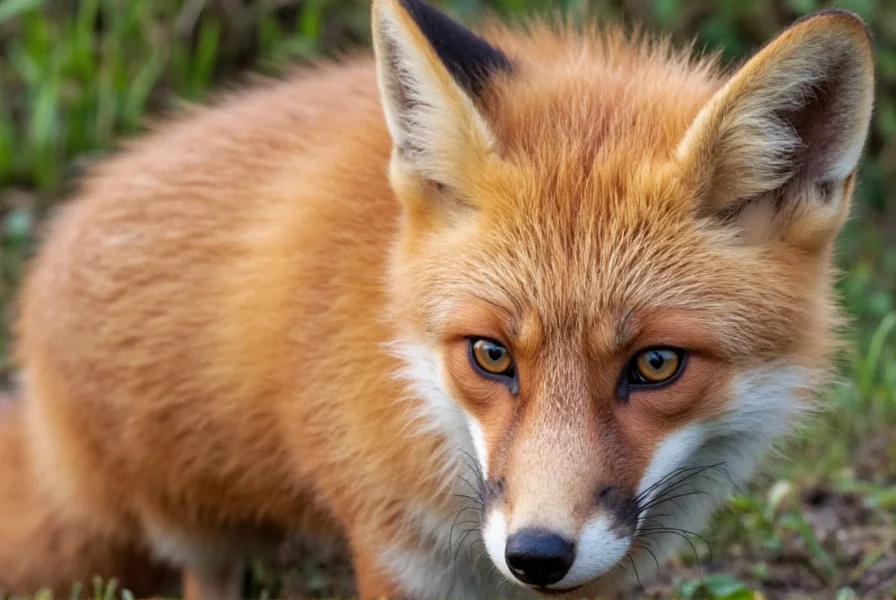Many wildlife enthusiasts search for information about \"ginger foxes\" expecting to discover a unique species, but this terminology actually refers to a specific color variation within the common red fox population. Understanding this distinction is crucial for accurate wildlife identification and appreciation of natural biodiversity.
Understanding Red Fox Color Variations
The red fox (Vulpes vulpes) exhibits remarkable color diversity across its global range. While the classic \"red\" fox features rusty orange fur, numerous color morphs exist including cross foxes, silver foxes, and the ginger variation. These variations stem from genetic differences affecting melanin production rather than representing separate subspecies.
Ginger-colored red foxes display a warm, reddish-orange coat that appears particularly vibrant during certain seasons. This coloration results from higher concentrations of pheomelanin (the pigment responsible for red and yellow tones) compared to standard red fox variants. The intensity of the ginger hue can vary based on geographic location, diet, and seasonal changes.
Genetic Basis of Ginger Coloration
Scientific research reveals that fox coat color variations follow a relatively simple genetic pattern. The ginger phenotype emerges from specific combinations of alleles at the MC1R gene locus, which regulates melanin production. Unlike albinism or leucism, ginger coloration represents a natural variation within healthy populations.
This genetic variation provides evolutionary advantages in certain environments. In regions with autumnal foliage or sandy soils, the ginger hue offers superior camouflage compared to standard red variants. Population studies show higher concentrations of ginger-colored foxes in specific geographic areas where this coloration provides survival benefits.
Geographic Distribution of Ginger-Colored Foxes
Ginger-colored red foxes appear across the species' extensive range, which spans North America, Europe, Asia, and parts of North Africa. However, certain regions show higher frequencies of this color morph:
| Region | Ginger Fox Prevalence | Notable Characteristics |
|---|---|---|
| Northeastern United States | Moderate (15-25%) | Brighter ginger tones in autumn months |
| British Isles | High (30-40%) | Often with distinctive white-tipped tails |
| Scandinavia | Low (5-10%) | Darker ginger variants with thicker winter coats |
| Eastern Canada | Moderate (20-30%) | Often interbreeding with cross fox variants |
Physical Characteristics and Identification
Identifying a ginger-colored red fox requires attention to specific features beyond just coat color. These animals typically display:
- Warm reddish-orange fur with minimal black tipping on guard hairs
- White underbelly and throat patches
- Black legs and ear tips (consistent across all red fox color morphs)
- Distinctive bushy tail often with white tip
- Body length of 18-35 inches (45-90 cm) excluding tail
It's important to distinguish ginger red foxes from other canids. Coyotes, for example, have uniformly colored tails without white tips, while gray foxes display different facial markings and lack the characteristic red tones.
Behavioral Patterns and Ecology
Ginger-colored red foxes exhibit identical behavioral patterns to other red fox variants. These intelligent predators maintain complex social structures and demonstrate remarkable adaptability to various environments. Their diet consists primarily of small mammals, birds, insects, and seasonal fruits.
Research indicates no significant behavioral differences between color morphs. All red fox variants share similar hunting techniques, denning behaviors, and vocal communication patterns. The primary difference remains purely cosmetic—limited to fur pigmentation.
Conservation Status and Population Trends
The International Union for Conservation of Nature (IUCN) lists the red fox as a species of \"Least Concern\" due to its wide distribution and stable populations. Ginger-colored variants face no additional conservation concerns beyond those affecting the species as a whole.
Urban expansion has actually increased red fox populations in many regions, as these adaptable animals thrive in suburban environments. However, habitat fragmentation remains a concern in certain areas, potentially affecting genetic diversity within local populations.
Common Misconceptions About Ginger Foxes
Several misconceptions surround ginger-colored foxes:
- Misconception: Ginger foxes represent a separate species
Reality: They're simply a color variation within Vulpes vulpes - Misconception: Ginger foxes have different temperaments
Reality: Behavior varies by individual, not coat color - Misconception: Ginger is the rarest color morph
Reality: Prevalence varies by region but isn't exceptionally rare











 浙公网安备
33010002000092号
浙公网安备
33010002000092号 浙B2-20120091-4
浙B2-20120091-4